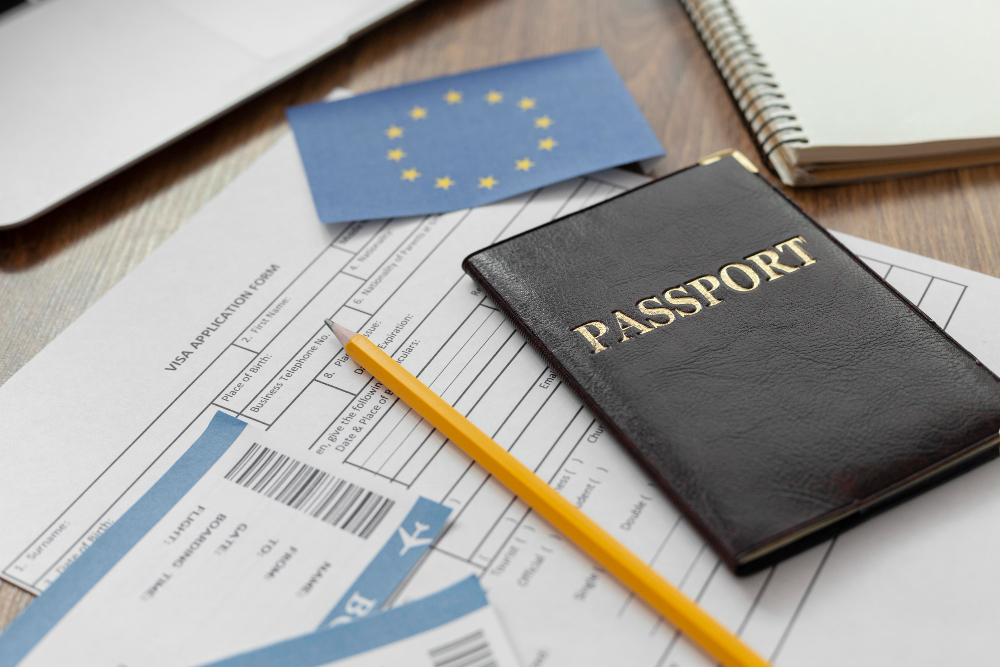- Info@anzgloballawassociates.com
- 03008618785
- 03266315224
The F1 visa is the most common U.S. student visa granted to international students, including those from Pakistan, who wish to pursue academic studies or language training in the United States. Known for its global academic reputation and diverse student life, the U.S. is a top choice for Pakistani students seeking quality education abroad.
However, getting an F1 visa requires detailed preparation, document verification, and a successful visa interview. This guide walks you through everything you need to know — from requirements to legal tips — for a smooth visa process.

The F1 visa is a non-immigrant student visa issued to individuals who are:
Enrolled in a full-time academic program at a U.S. university or college
Accepted by a SEVP-approved institution
Meeting the required financial and English language criteria
To be eligible for an F1 visa from Pakistan, you must:
Have an admission offer from a SEVP-approved U.S. school
Intend to return to Pakistan after completing your studies
Show sufficient financial resources to cover tuition and living expenses
Be proficient in English or enrolled in a language training program
Have no intent to immigrate or settle permanently through this visa
Valid passport
Form I-20 (issued by U.S. school)
DS-160 confirmation page
SEVIS fee receipt (Form I-901 payment)
Visa application fee receipt
University acceptance letter
Bank statements or financial guarantee
Academic transcripts and certificates
Standardized test scores (e.g., TOEFL, IELTS, GRE, SAT)
Ties to Pakistan (job offer, family, property, etc.)
Once you’re admitted to a U.S. university, they will issue Form I-20, a required document for your visa application.
Visit fmjfee.com and pay the I-901 SEVIS fee (currently $350). Print and save the receipt.
Complete the DS-160 visa application form at ceac.state.gov. Be accurate and honest.
The U.S. visa application fee is approx. $185 USD. Pay via an approved U.S. Embassy method in Pakistan.
Create a profile and book your F1 visa interview at the U.S. Embassy in Islamabad or U.S. Consulate in Karachi.
Bring all your documents and be prepared to answer questions about your course, university, financial support, and future plans.
Unclear academic or career goals
Inability to prove strong ties to Pakistan
Weak financial documentation
Poor interview performance
Doubt over return intentions (immigration risk)
Legal support from an immigration consultant or lawyer can reduce these risks and improve your chances of visa approval.
Be confident and honest
Clearly explain your academic goals
Justify why you chose the U.S. over other countries
Highlight how you will use your degree in Pakistan
Practice answering questions in English
At ANZ Global Law Associates, we provide:
Personalized consultation for your travel purpose
Interview coaching and document review
Visa refusal handling and reapplication support
End-to-end legal guidance
Book your consultation today and get expert legal support for your student visa process.

Answer: It’s typically issued for the duration of your academic program, as stated on your I-20, plus an additional 60 days grace period.
Answer: Yes. Students can work up to 20 hours/week on-campus. For off-campus work (OPT or CPT), you need special authorization.
Answer: SEVIS (Student and Exchange Visitor Information System) is a U.S. government system that tracks F1 visa holders. You must pay the SEVIS I-901 fee before your interview.
Answer: In some cases, yes. You may apply for OPT (Optional Practical Training) after graduation, or change status to a work visa (like H1-B) if eligible.
Answer: You can reapply. It’s important to understand the reason for refusal, fix the problem, and present a stronger case next time — ideally with legal help.
Turn your study abroad dreams into reality with expert guidance, hassle-free visa processing, and top university placements. Let us help you take the first step toward a brighter future!
🔹 Personalized Counseling | 🔹 Visa Assistance | 🔹 University Admissions
Copyright © 2025 All Rights Reserved by anzgloballawassociates

WhatsApp us